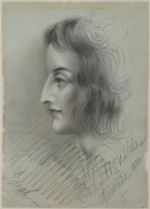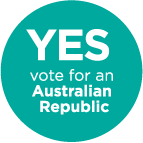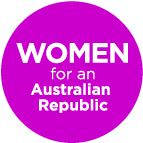From The Canberra Times 2 October 1999
Imelda Fleming, now 71 and an active member of the Canberra branch of the Australian Republican Movement, writes in the September 1999 edition of the The Republican, newsletter of ACT ARM, about what recent influences on her to vote YES for an Australian Republic.
In the introduction to his book, “The Australian Republic – The Case for Yes” edited papers from the 1999 National Convention of Republicans, John Uhr notes: “The republic is an important symbol of a sovereign people….In monarchies, the sovereign is the ruler. In republics, the people see themselves as sovereign, and take responsibility for rule. A sovereign people is independent because it rules itself.”
Malcolm Turnbull, Chairman of the Australian Republican Movement said at the 1998 Constitutional Convention that the goal of the ARM is a simple one: “Australia’s Head of State should be an Australian citizen, representing Australian values, living in Australia, chosen by and answerable to Australians.” At the National Convention of Republicans, a year later, Neville Wran said the fundamental question at the 6 November referendum is: “Should an Australian be our Head of State?”
Speaking about the process leading to the republic referendum, federal Attorney-General, Daryl Williams, said the Republic Bill, to replace the Governor -General and Queen with a President, would not give the Commonwealth any new powers. Nor would it alter the Australian flag or national anthem, mark a break with our tradition of stable parliamentary democracy, or create an office of President that is more grand or expensive than that of Governor-General.
In the 1999 Hawke lecture on the theme ‘An Australian Republic: A Guide for the Perplexed’, former Governor-General, Sir Zelman Cowen, said speeches and papers he gave and wrote in the early 1970s while Vice-Chancellor of the University of Queensland reflected, and were intended to affirm, his strong belief that the sense of institutions being legitimate, especially the institutions of government, is the glue that holds societies together. He then referred to Paul Keating’s historic speech in the House of Representatives in June 1995 on the establishment of an Australian republic, quoting in particular what Keating had said about the significance of an Australian Head of State: “Each and every Australian should able to aspire to be our Head of State.
Every Australian should know what the office will always be filled by a citizen of high standing who has made an outstanding contribution to Australia, and who in making it has enlarged our views of what it is to be an Australian.
In these and other ways, the creation of an Australian republic can actually deliver a heightened sense of unity. It can enliven our national spirit and, in our own minds and those of our neighbours, answer beyond doubt the perennial question of Australian identity – the question of what we are and what we stand for. The answer is not what having a foreign Had of State suggests. We are not a political or cultural appendage to another country’s past. We are simply and unambiguously Australian.”
Sir Zelman noted a reply to the speech: there was no need to change to a republic since, in substance, through the evolution of our Constitution, we already had the reality of a republic. He also noted that during the 1990s, there had been a significant shift in national sentiment towards an Australian republic.
Then, in an address in Washington DC in September 1997, Sir Zelman said he had come to the conclusion that the symbolic change to a republic should be made, and that it was a matter of importance for an independent Australia to state simply and unambiguously our national status in constitutional terms. We should retain our parliamentary system unimpaired. We should have a Head of State who is an Australian citizen and resident, and so is exclusively ours, and who fully and unequivocally symbolises our nation.
Excluding constitutional matters, he said, the most significant role the President would perform would be in the course of daily relationships with many diverse groups of Australians; talking with them and, hopefully, not at them. “The response is often quite remarkable and very moving,” he said. ” It reinforces my view that this is how the presidency will make itself most effective. I believe the role of the President should be that of representing the nation to itself.”
Sir Zelman went on to say he believed a president could promote unity, where practitioners of politics are partisan and at times, sharply divided. Or, if this is too grand a claim, a president can at least help to preserve and keep in repair, the consensus in our society. He strongly supported the Constitutional Convention’s bipartisan model for appointment of the president.
Another to influence my thinking has been Christina Gillgren from the YES movement in Western Australia. At the National Convention of Republicans, Christina said the ConCon model will involve the entire Australian community: individuals, community organisations, local government, State and Territory parliaments. “Any one of us will be able to nominate candidates,” she said. “Moreover, a nomination from a State or Territory has a better chance of being fairly evaluated than under the arrangements for appointing the Governor-General!”



